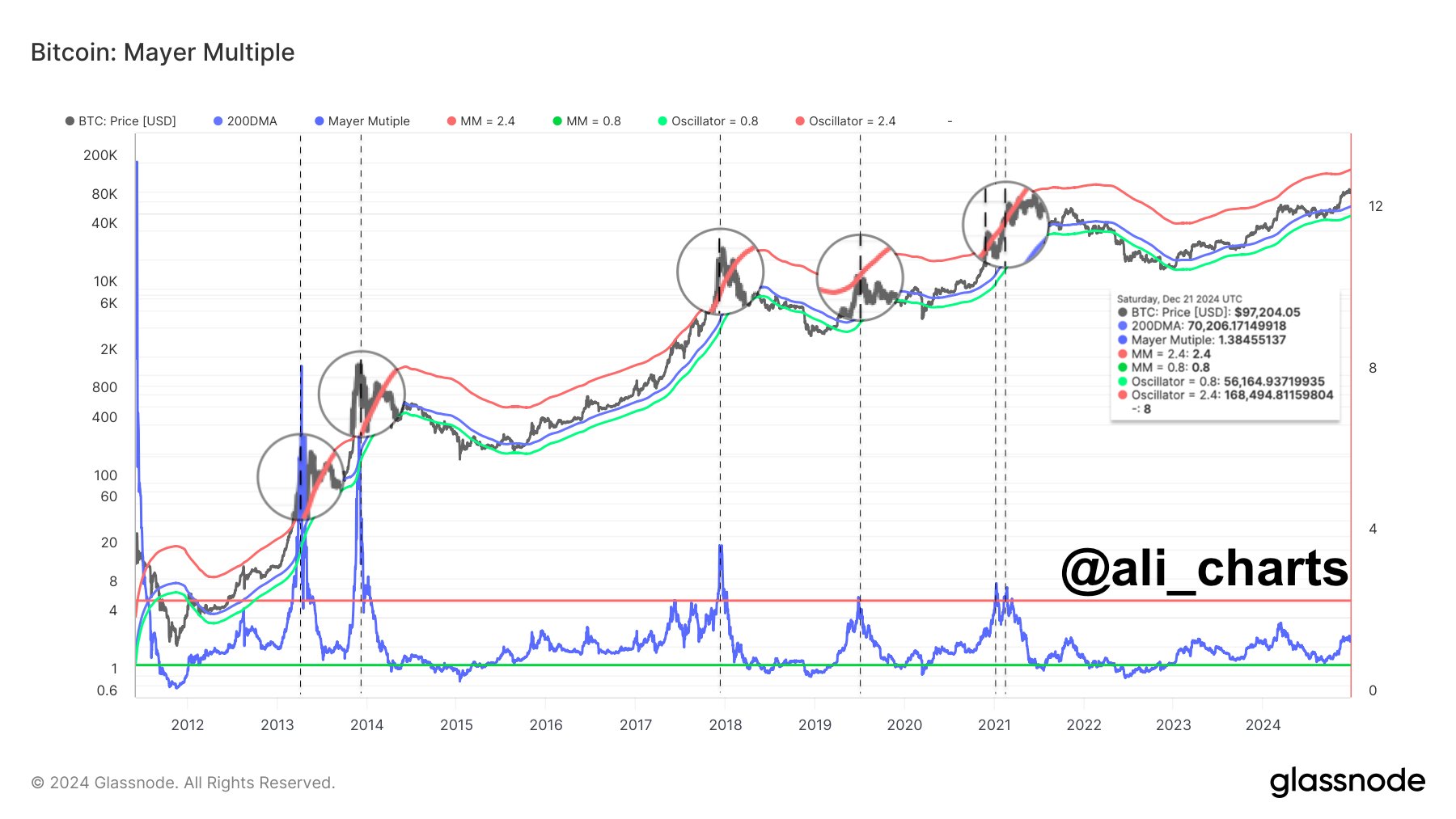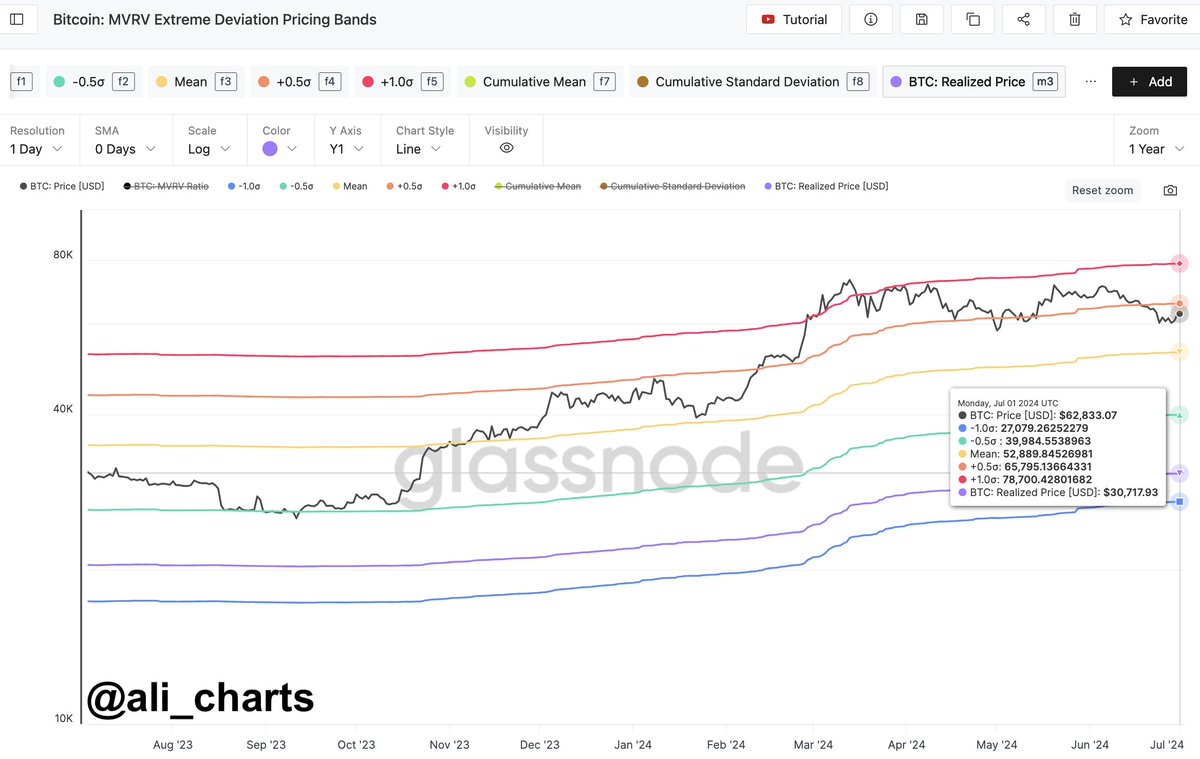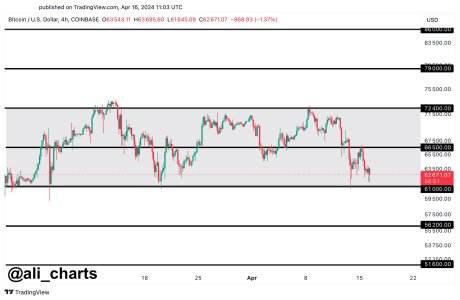
2021-3-3 04:00 |
Bitcoin’s rapid price rise has brought it to another milestone. So, what could be next for the best performing asset of recent memory?
The bitcoin price is rising.In January 2021, Bloomberg Analyst Mike McGlone predicted that the price of bitcoin would hit $50,000 at some point this year. At the time, the value of the leading crypto asset was merely hovering above $30,000, and the $50,000 mark felt a very long way off. Less than a full month later and the cryptocurrency king has not only passed $50,000 — a major price milestone — but exceeded $56,000. And it appears as if nothing can stop it from going even further.
The price rise that has seen bitcoin nearly double in value since the beginning of 2021 started in late 2020, when the cryptocurrency industry as a whole witnessed a bull run that surpassed any cycle from the past, particularly that of 2017.
So, with bitcoin hitting the $56,000 mark, the question on everyone's mind is: What’s next? What does the future hold in terms of price, regulation and adoption of this “digital gold?”
A Brief Bitcoin Price HistoryOne of the things that has contributed to the appeal of bitcoin is its status as the first-ever cryptocurrency. Created in 2009 by a pseudonymous person or group known as Satoshi Nakamoto, the idea behind its creation was to serve as an alternative to the failing traditional banking system.
However, its rise to the top and acceptance by the public hasn’t been simple or straightforward. The cryptocurrency barely existed, without any significant value for years. It was only in 2011 that its value increased significantly, with its reaching a meager $10 that year.
The economic crisis in Europe in 2013 allowed the asset to make inroads into other markets outside of the U.S. And the view that it could serve as a viable alternative to traditional fiat currencies helped in its early adoption. Simultaneously, several other cryptocurrencies were emerging based on the Bitcoin open-source code with little tweaks.
But bitcoin’s rise in value was a steady one (even if it is notoriously volatile in the shorter term), as bitcoin added zeros year after year. While it has had a few bull runs since it was created, the first massive bull run was in 2013 when it crossed the $1,000 mark. In 2017, it crossed the $10,000 mark and got very close to the $20,000 one by reaching highs above $19,000.
What followed those highs was a massive slump the following year. The value came tumbling down from $19,783 in December 2017 to $3,300 in December 2018. From there, its price became more stable and slowly began its rise back to the top. It took almost two years for the cryptocurrency to reach its previous all-time high again and it finally reached the $20,000 mark in December 2020.
Bitcoin carried its 2020 price form right into 2021 as it continued to reach new milestones, seemingly with each day. After finishing 2020 at around $28,000, it quickly rose to a peak around $40,000 in January 2021, before flagging a bit.
With February came the big Tesla announcement of a $1.5 billion investment in bitcoin, plus the entrance of other institutions like BNY Mellon, playing a part in helping the value of the asset continue to climb, inching close to $50,000 before finally passing that figure on February 16, 2021, exactly two months after hitting $20,000 for the first time.
What’s Next?Now that Bitcoin has passed the big 50, there are several things that cryptocurrency enthusiasts and skeptics alike are looking forward to. The multi-million question, however, is: Will bitcoin’s value keep rising from here, or will we witness another major price slump like we did in 2017? The truth is, it’s hard to tell, but analysts and price forecasts can give us some idea of what to expect from the asset.
Price ForecastOnly a few investors and analysts were able to predict the massive surge in bitcoin price and hedge fund manager Mike Novogratz was one of them. Novogratz has predicted that bitcoin will peak at $65,000 in 2021. The number may have looked overly optimistic when he originally announced it, but given that it is still only February and bitcoin has already reached $50,000, it doesn't seem far-fetched anymore.
Perhaps a prediction that still looks and feels farfetched is that of Tom Fitzpatrick, the Citibank analyst, who said that bitcoin will peak at $318,000 by the end of 2021.
Looking at previous surges in price and the current price trend, it would seemingly take a miracle for that to happen. But bitcoin has been known to pull off some surprising price stunts that are nothing short of magical. So, it wouldn’t hurt to hold on to that dream.
On the side of technical analysis, many cryptocurrency platforms also have made price forecasts about what to expect from BTC. DigitalCoinPrice, for instance, believes bitcoin will reach highs of more than $86,000 by the end of this year, at the time of this writing.
Given that the price of the cryptocurrency has more than doubled its price in the past two months, it doesn't seem entirely impossible that the same thing could happen within the next ten months. The Investment bank JPMorgan Chase has predicted that bitcoin could reach $146,000.
But all of these predictions have one thing in common; they see the value of bitcoin rising. Considering that the cryptocurrency is in the price form of its life, it is probably only a full-fledged skeptic that would have a negative price outlook.
Increased AdoptionWhile it is hard to tell with certainty what will happen to the price of bitcoin, one thing is sure: It is getting the attention of institutional investors.
The primary issue that most institutional investors have with bitcoin is its volatility. But in the current inflationary economic climb, where not taking a risk seems like a more significant risk, investors seem ready to bet on bitcoin.
With companies like MicroStrategy, Tesla and Square already investing or planning to accept bitcoin payments, other corporate entities should join the bandwagon because they wouldn’t want to be left out.
Mastercard has already announced plans to facilitate bitcoin transactions. Apple seems to be considering investing in bitcoin. As noted above, BNY Mellon plans to include digital assets in its offerings. Even JPMorgan is optimistic about bitcoin. So, you see, major institutions have been backed into a corner of either accepting that BTC is the present and the future, or being left behind.
However, adoption doesn't mean that bitcoin will become the world reserve currency. Many believe it will only become a more accepted value store. Its current price and the likelihood of even higher importance in the future may actually make it more difficult for bitcoin to become a standard transactional currency.
Thus, as time goes, we could witness more institutional and mainstream adoption of the cryptocurrency as a store of value than as a payment method for goods and services.
Regulatory ClarityAs bitcoin continues to climb higher, more regulations don't just look likely, they have become an inevitability. The increase in value means an increase in risks — the deal is gradually getting to a point where regulators' warning about bitcoin’s perceived dangers are no longer enough. There's a need for action.
This is evidenced in a recent statement made by a commissioner of the U.S. Securities and Exchange Commission, Hester Peirce, who said that there is now an urgent need for more regulatory clarity concerning the use of cryptocurrencies. She is not alone with this view, as this writer also shares the same thought.
As BTC becomes more mainstream, regulatory bodies have to become more proactive and take a more cursory look at how the industry could serve the interests of their people. They should avoid reactionary actions, like those of the Nigerian or Indian governments, which have both decided to effectively ban cryptocurrencies in their jurisdictions.
Instead, more regulatory clarity should be offered to the industry and, with time, everyone will become enamored with the cryptocurrency space.
ConclusionBitcoin passing $50,000 is a significant milestone, not just for the asset, but also for other cryptocurrencies, too. It is expected that the rise in value of bitcoin and its effects will generally have a ripple effect on the whole cryptocurrency industry. After all, bitcoin has always been the pacesetter.
Thus, this new price level will bring with it a whole new level of scrutiny, pessimism and some fight back from the traditional financial industry. But BTC is like a moving train, and presently, nothing can stop this train from moving further forward.
This is a guest post by Oluwapelumi Adejumo. Opinions expressed are entirely their own and do not necessarily reflect those of BTC Inc or Bitcoin Magazine.
origin »Bitcoin (BTC) на Currencies.ru
|
|









